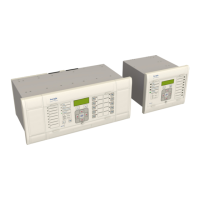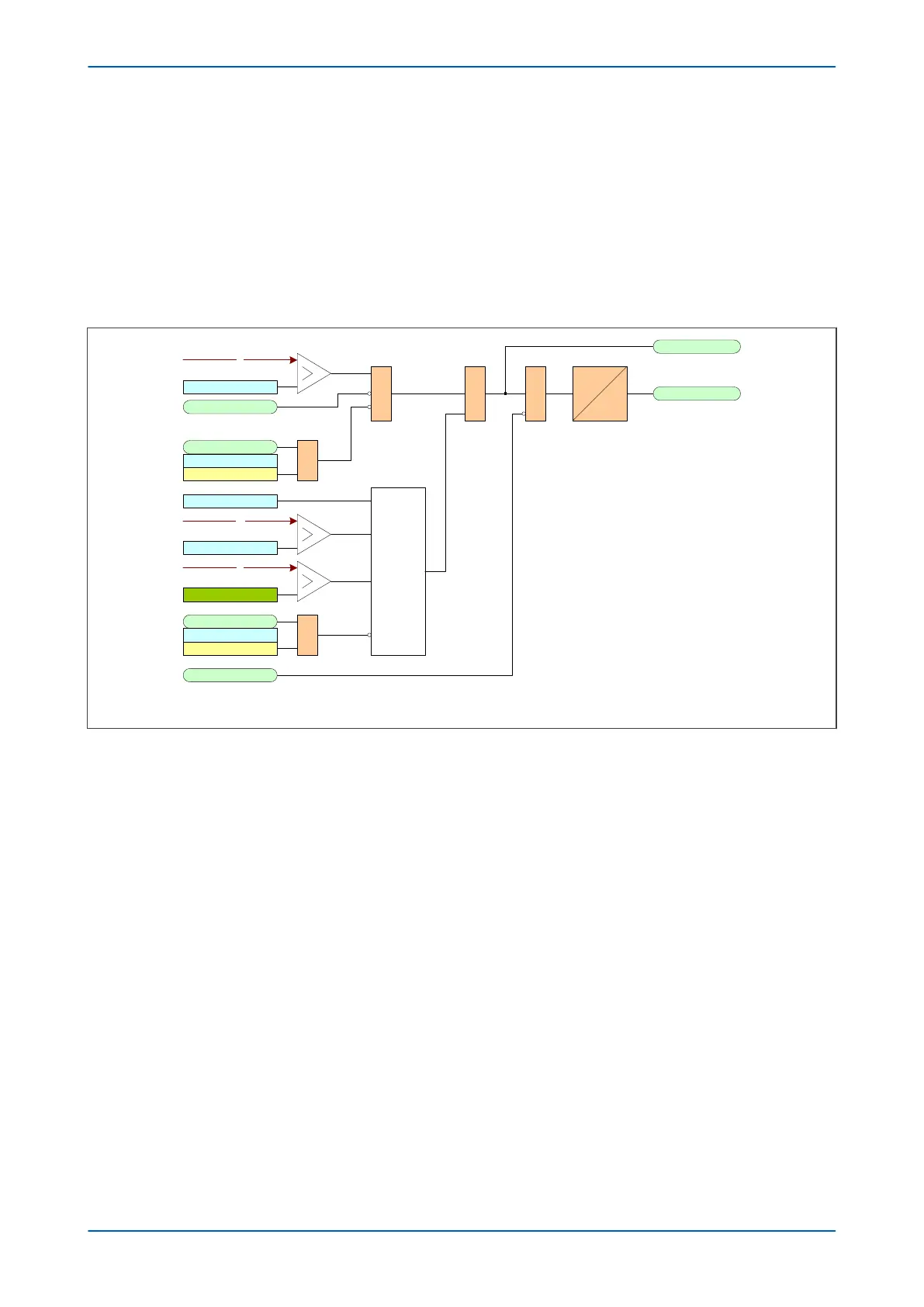The directional criteria with residual voltage polarisation is given below:
● Dir
ectional forward: -90° < (angle(IN) - angle(VN + 180°) - RCA) < 90°
● Directional reverse : -90° > (angle(IN) - angle(VN + 180°) - RCA) > 90°
The device derives this voltage internally from the 3-phase voltage input tha must be supplied from either a 5-limb
VT or three single-phase VTs. A three-limb VT has no path for residual flux and is therefore unsuitable to supply the
device.
6.4.1.1 DIRECTIONAL EARTH FAULT LOGIC WITH RESIDUAL VOLTAGE POLARISATION
&
EF 1 IN>1 TBlk
EF1 IN>1 Start
EF1 IN>1 Trip
&
EF1 IH2 Start
IN> Blocking
V00691
IN>1 2H Block
IN
CTS Block
IN>1 Current
&
VTS Slow Block
IN> Blocking
IN>1 VTS Block
VN
IN> VNpol Set
&
IDMT/ DT
Directional
check
IN> Direction
IN
Low Current
&
This diagram does not show all stages . Other stages follow similar principles.
Figure 103: Directional EF logic with neutral voltage polarization (single stage)
Voltage Transformer Supervision (VTS) selectively blocks the directional protection or causes it to revert to non-
directional operation. When selected to block the directional protection, VTS blocking is applied to the directional
checking which effectively blocks the Start outputs as well.
6.4.2 NEGATIVE SEQUENCE POLARISATION
In some applications, the use of residual voltage polarisation may be not possible to achieve, or at the very least,
pr
oblematic. For example, a suitable type of VT may be unavailable, or an HV/EHV parallel line application may
present problems with zero sequence mutual coupling.
In such situations, the problem may be solved by using Negative Phase Sequence (NPS) quantities for polarisation.
This method determines the fault direction by comparing the NPS voltage with the NPS current. The operating
quantity, however, is still residual current.
This can be used for both the derived and measured standard earth fault elements. It requires a suitable voltage
and current threshold to be set in cells IN> V2pol set and IN> I2pol set respectively.
Negative phase sequence polarising is not recommended for impedance earthed systems regardless of the type
of VT feeding the relay. This is due to the reduced earth fault current limiting the voltage drop across the negative
sequence source impedance to negligible levels. If this voltage is less than 0.5 volts the device will stop providing
directionalisation.
P64x Chapter 9 - Current Protection Functions
P64x-TM-EN-1.3 219

